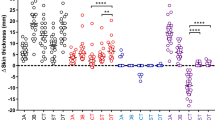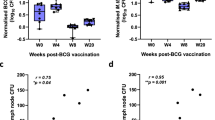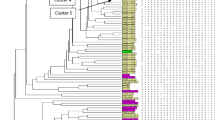Abstract
Results, obtained to date, by different authors on the investigation of the influence of the sexual organs in experimental tuberculosis vary very much indeed. Mautner1 and Bricker2 admit that castration prolongs the life of the inoculated animals, whereas Brack and Gray3 and Long and Vogt4 deny such results. Vercesi and Merenda5, Gray and Brack6 and Long and Vogt4 maintain that injection of œstrogens does not modify the course of experimental tuberculosis. Carnes and Biskind7, who administered testosterone, reach the same conclusion. Most of these investigations have been carried out with very small groups of animals, and in others the results have been observed a few days after the inoculation; thus it has not been possible to define with precision the reaction of the animals to the tuberculous infection. Studies were carried out by us in the guinea pig to establish not only the type of pathological lesions, but also the survival-rate of the animals. These animals were grouped in the following manner: 20 castrated animals, 10 males and 10 females; 20 non-castrated females, which were injected intra-peritoneally with 50 µgm. of œstradiol dipropionate three times a week; 20 non-castrated males, injected intraperitoneally with 250 µgm. of testosterone propionate three times a week; 20 control animals. All these animals were injected subcutaneously with 1 c.c. of an emulsion which contained 0.1 mgm. of tubercle bacilli of the human type.
This is a preview of subscription content, access via your institution
Access options
Subscribe to this journal
Receive 51 print issues and online access
$199.00 per year
only $3.90 per issue
Buy this article
- Purchase on SpringerLink
- Instant access to full article PDF
Prices may be subject to local taxes which are calculated during checkout
Similar content being viewed by others
References
Mautner, H., Monatsch. Kinderheilk., 21, 38 (1921).
Bricker, F. M., Z. Tuberk., 40, 198 (1924).
Brack, C. B., and Gray, L. A., Endocrin., 27, 322 (1940).
Long, E. R., and Vogt, A. B., Amer. Rev. Tuberc., 44, 196 (1941).
Vercesi, R., and Merenda, P., Riv. Med. Soc. della Tuberc., 10, 42 (1933).
Gray, L. A., and Brack, C. B., Endocrin., 24, 645 (1939).
Carnes, W. H., and Biskind, O. R., Bull. Johns Hopkins Hosp., 66, 297 (1940).
Izzo, R. A., and Cicardo, V. H., Nature, 158, 590 (1946).
Author information
Authors and Affiliations
Rights and permissions
About this article
Cite this article
IZZO, R., CICARDO, V. Gonads and Experimental Tuberculosis. Nature 160, 155 (1947). https://doi.org/10.1038/160155a0
Issue date:
DOI: https://doi.org/10.1038/160155a0
This article is cited by
-
Experimentelle Genitaltuberkulose bei Kaninchen
Archiv f�r Gyn�kologie (1962)



